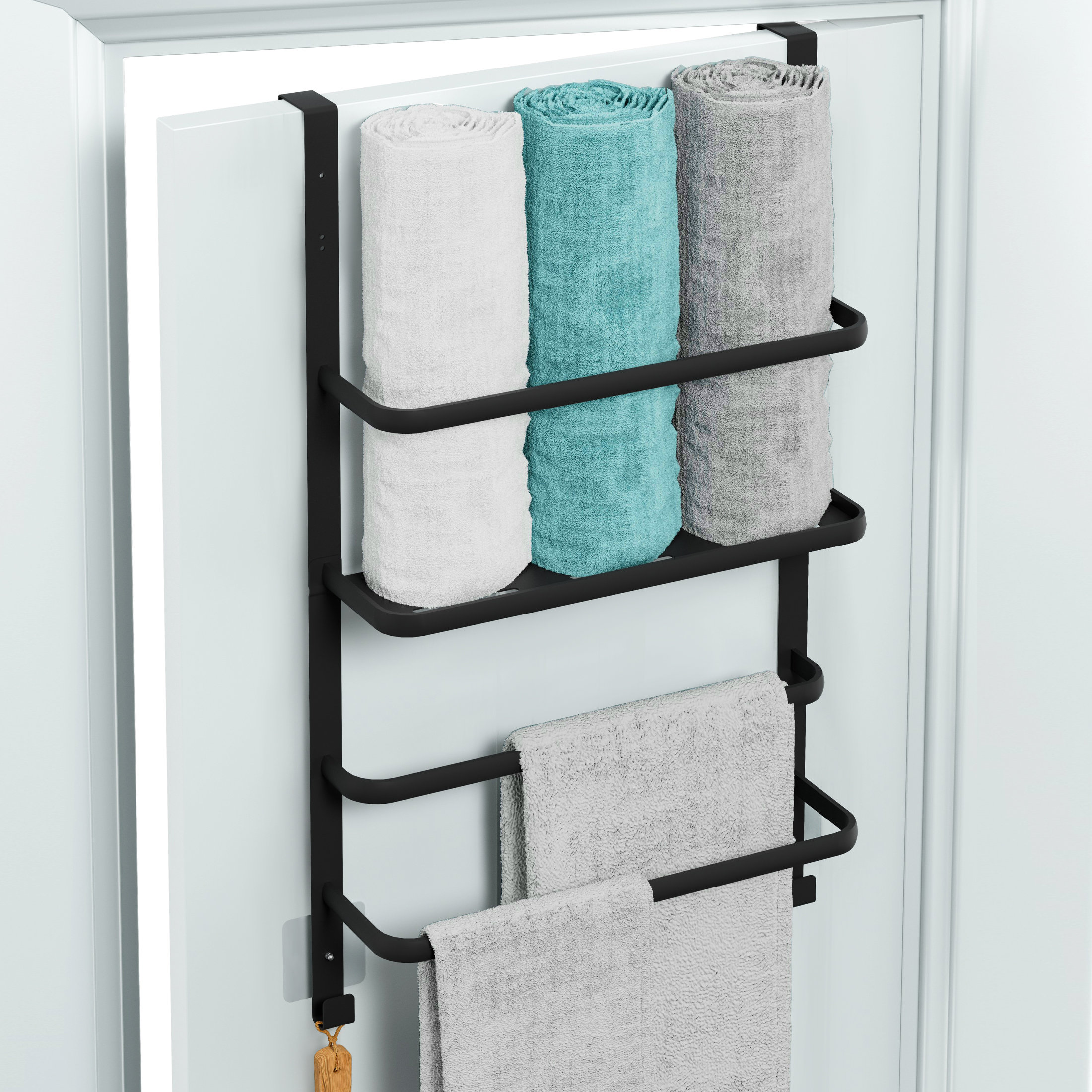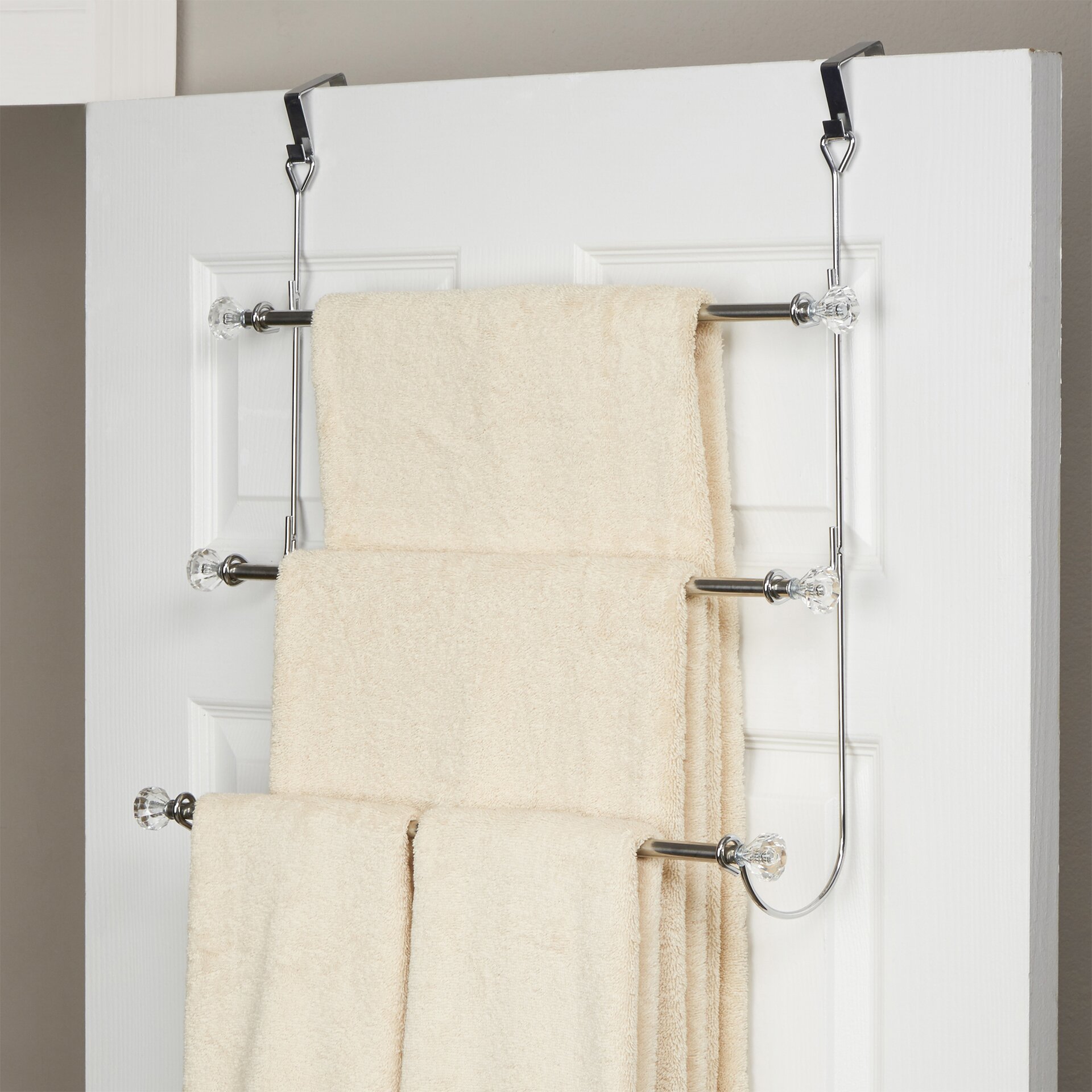Types of Inside Cabinet Door Towel Racks
Inside cabinet door towel racks offer a space-saving solution for organizing towels and linens in kitchens and bathrooms. The choice of rack depends on factors such as available space, cabinet door thickness, desired aesthetic, and budget. Different materials, mounting mechanisms, and designs cater to a wide range of preferences and needs.
Materials Used in Inside Cabinet Door Towel Racks
The material of an inside cabinet door towel rack significantly impacts its durability, aesthetic appeal, and overall lifespan. Common materials include metal, plastic, and wood, each with distinct advantages and disadvantages. Metal racks, often made of chrome-plated steel or aluminum, offer robust durability and a sleek, modern look. However, they can be susceptible to rust if not properly maintained. Plastic racks are lightweight, inexpensive, and come in a variety of colors, but they may not be as durable as metal options and can be prone to breakage under heavy loads. Wooden racks provide a warm, natural aesthetic and can add a touch of rustic charm to a kitchen or bathroom, but they require more careful maintenance to prevent water damage and warping.
Over-the-Door Towel Rack Mounting Mechanisms
Over-the-door towel racks utilize different mounting mechanisms, primarily adhesive and screw-in methods. Adhesive-mounted racks are convenient for installation as they require no drilling or tools. However, their adhesion strength can be limited, particularly on certain cabinet door materials or in humid environments. They may also leave residue upon removal. Screw-in racks offer greater stability and weight-bearing capacity, but require drilling holes into the cabinet door, potentially damaging the door’s finish. Choosing the appropriate mounting method depends on the cabinet door material, the weight of the towels, and the user’s willingness to potentially compromise the cabinet door’s integrity.
Unique Inside Cabinet Door Towel Rack Designs
Three distinct inside cabinet door towel rack designs illustrate the versatility of this space-saving solution.
Design 1: Sleek Metal Rack
This design features a slim, chrome-plated steel rack (12 inches wide x 4 inches deep x 1 inch high) with three horizontal bars. The bars are spaced approximately 2 inches apart to accommodate various towel sizes. It is designed for adhesive mounting, using high-strength adhesive pads to ensure stability. The minimalist design complements modern kitchens and bathrooms. The sketch shows three parallel horizontal bars connected by two vertical supports, forming a rectangular frame.
Design 2: Rustic Wooden Rack
This rack is crafted from sustainably sourced bamboo (10 inches wide x 5 inches deep x 1.5 inches high). It features a single, curved wooden bar, providing a unique aesthetic and ample space for hanging towels. It utilizes screw-in mounting for enhanced stability and weight capacity. The sketch shows a gently curved, single bar of bamboo with two small, discreetly placed mounting brackets at each end.
Design 3: Multi-Tiered Plastic Rack
This plastic rack (14 inches wide x 6 inches deep x 4 inches high) offers multiple tiers for increased towel storage capacity. It’s constructed from durable, BPA-free plastic in a neutral white color to complement various décor styles. It utilizes an adhesive mounting system with multiple adhesive points for improved stability. The sketch shows a tiered structure with three horizontal levels, each slightly smaller than the one below, creating a stepped appearance.
Comparison of Inside Cabinet Door Towel Rack Styles
| Type | Material | Mounting | Pros/Cons |
|---|---|---|---|
| Slim Metal Rack | Chrome-plated Steel | Adhesive | Pros: Sleek, durable, easy installation. Cons: Limited weight capacity, potential adhesive residue. |
| Rustic Wooden Rack | Bamboo | Screw-in | Pros: Stylish, strong, natural aesthetic. Cons: Requires drilling, potential for water damage. |
| Multi-Tiered Plastic Rack | BPA-free Plastic | Adhesive | Pros: High capacity, lightweight, inexpensive. Cons: May not be as durable as metal, potential for breakage. |
Installation and Usage of Inside Cabinet Door Towel Racks

Installing and effectively using an inside cabinet door towel rack involves understanding the installation process, maximizing space, respecting weight limits, and performing regular maintenance. This ensures both functionality and longevity of the product.
Adhesive-Mounted Towel Rack Installation
Installing an adhesive-mounted towel rack is generally straightforward. Begin by thoroughly cleaning the inside of your cabinet door with a degreasing agent, ensuring the surface is completely dry and free of any residue. This step is crucial for optimal adhesion. Next, carefully peel back the protective film from the adhesive strips on the back of the towel rack. Align the rack precisely where you want it on the door, ensuring it’s level. Firmly press the rack against the door’s surface for at least 30 seconds, distributing the pressure evenly to ensure complete contact with the adhesive. Allow the adhesive to cure for the time specified by the manufacturer—usually several hours—before hanging any towels. Avoid placing heavy items on the rack during this curing period.
Troubleshooting Adhesive Installation Problems
If the adhesive fails to hold, it may be due to insufficient surface cleaning, improper application of pressure, or using the rack before the adhesive has fully cured. If the rack falls, carefully remove any remaining adhesive residue using a suitable adhesive remover and repeat the installation process, paying close attention to surface preparation and curing time. Using a stronger adhesive may be necessary for heavier towels or racks, but always check for compatibility with your cabinet door material. Consider using a different type of towel rack, like a hook-style or screw-in option, if adhesive mounting consistently fails.
Maximizing Space Efficiency
Strategically placing your inside cabinet door towel rack can greatly improve storage efficiency. Consider the size and shape of the towels you’ll be storing to determine the optimal placement and rack style. For example, a smaller, multi-hook rack might be suitable for hand towels and washcloths, while a larger bar-style rack is better for bath towels. Rolling towels instead of folding them can save space and makes them easier to access. Organize towels by size and frequency of use, placing frequently used items within easy reach. Consider using additional organizational tools, such as small shelves or baskets, to maximize space within the cabinet.
Weight Capacity Limitations and Consequences
The weight capacity of an inside cabinet door towel rack varies depending on the material, design, and adhesive strength. Exceeding the weight limit can lead to the rack detaching from the door, potentially damaging the door itself or causing injury. Always check the manufacturer’s specifications for the weight capacity before using the rack. For example, a small adhesive-mounted rack might only support a few lightweight hand towels, whereas a more robust screw-in rack could hold heavier bath towels. Overloading the rack with wet, heavy towels increases the risk of failure. Using the rack beyond its stated weight capacity voids any warranty and may result in the need to replace the rack and potentially repair any damage to the cabinet door.
Maintenance Procedures for Inside Cabinet Door Towel Racks
- Regularly inspect the rack for any signs of damage or loosening.
- Clean the rack periodically with a damp cloth and mild detergent to remove dirt and grime.
- Avoid using abrasive cleaners or harsh chemicals, which could damage the finish.
- If the adhesive starts to fail, consider re-applying a stronger adhesive or replacing the rack entirely.
- Periodically check the tightness of screws (if applicable) to prevent loosening.
Considerations When Choosing an Inside Cabinet Door Towel Rack

Selecting the right inside cabinet door towel rack for your small kitchen or bathroom requires careful consideration of several key factors. The perfect rack will not only provide convenient towel storage but also enhance the overall aesthetic appeal of your space while remaining practical and budget-friendly. Making informed choices will ensure a satisfying purchase that meets your specific needs and preferences.
Space Constraints and Towel Capacity
The available space inside your cabinet door is paramount. Measure the door’s width and depth carefully before purchasing a rack. Consider the number of towels you typically need to hang. A small rack might suffice for a single person’s hand towels, while a larger family might need a rack with multiple bars or a wider design to accommodate more towels comfortably. Overcrowding will lead to towels bunching up and drying inefficiently, while underestimating your needs results in insufficient storage. For example, a single-bar rack might be suitable for a small powder room, whereas a double-bar or multi-hook rack is better suited for a larger bathroom or kitchen with more towels.
Cost-Effectiveness of Different Options
Inside cabinet door towel racks vary significantly in price. Factors influencing the cost include the material used (e.g., chrome-plated steel is generally less expensive than brushed nickel or stainless steel), the number of bars or hooks, the design complexity, and the brand reputation. Basic single-bar racks made of simple materials are usually the most affordable, often costing between $10 and $20. More sophisticated designs with multiple bars, added features like towel rings, or those crafted from higher-quality materials can cost significantly more, sometimes exceeding $50. Consider your budget and weigh the features against the price to determine the most cost-effective option for your needs. For instance, if you only need to hang a few hand towels, a less expensive single-bar rack would be a wise choice.
Aesthetic Considerations and Style Compatibility
The towel rack’s appearance is crucial for maintaining a cohesive and aesthetically pleasing kitchen or bathroom design. Consider the overall style of your space. A sleek, modern chrome rack might complement a contemporary bathroom, while a more ornate, brushed nickel rack might be better suited to a traditional or farmhouse-style kitchen. The finish of the rack should harmonize with other fixtures and fittings. For instance, a matte black rack would seamlessly integrate with other black accents in a minimalist bathroom. Examine the rack’s design details; some feature subtle curves, while others have sharp, angular lines. Ensure the style complements the existing décor, creating a visually harmonious space. A mismatched rack can stand out negatively, disrupting the overall design flow.
